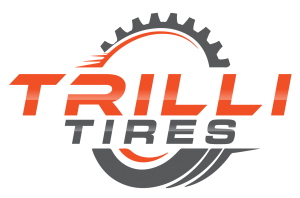
Car Tires - 4 Common Mistakes That Can Quickly Wear Them Out
Your car’s tires might not be something you think of fairly often. In fact, you might only notice them before going on long trips or when they blow up. Proper tire care and maintenance are incredibly important, so checking them on a regular basis should be a habit.
Tires are made of rubber and will degrade quickly if not cared for. Improper maintenance or neglecting maintenance altogether can lead to unfortunate incidents later on—like losing control when the tire tread suddenly separates from the body. In order to avoid such concerns, knowing a bit more about the common mistakes that drivers make can help prolong the lifespan of your car tires.
Here are four common mistakes that many drivers do that actually wear the car tires out quickly:
Not knowing the date of manufacturing
Car tires are given an average lifespan of three to six years, depending on its usage. While this is a good rule of thumb, one must remember that the expiration date starts at the manufacturing date, not when you bought and first used the tires.
Buying tires from your local tire supply does not always mean you’ll buy a tire manufactured the same year as you bought it, so make sure to check the tire code before you pay for it. The tire code is the set of numbers indicated at the side of your wheel. The first two digits represent the week of the year, while the last two represent what year it was manufactured past the year 2000.
Over-wearing the thread
Some people rely on a visual look at the tire’s thread to determine whether it’s still okay. While a lack of treading obviously means it needs a change, the converse does not mean it’s safe for use. To check whether the tire treads are too shallow, insert a Canadian quarter into one of the grooves with the caribou facing down. If you see the tip of its nose, it’s probably time to change tires.
Under-loading or overloading the tire’s PSI
The car tire’s PSI is incredibly important when going out on drives. While not immediately noticeable, under-loading the air pressure in the tires will wear out the rubber quickly, possibly even causing it to break. Overloading the air pressure, on the other hand, can cause it to burst, causing your wheel to be unusable until changed.
The maximum PSI allowed for your tires should be indicated on the side of your wheel. While that is the maximum, it is not advisable to let the pressure meet that point, as it could cause the tire to burst when it gets warm.
Not knowing the appropriate wheels
There are the appropriate wheel types and sizes for the appropriate road and cars. Using the wrong type for the wrong circumstances won’t only wear down the wheel quickly, it will also impact your car’s energy consumption. Your car’s manual should indicate what the appropriate wheel size is for your car—bigger cars require bigger wheels as these affect how much load it can carry. Differing road types affect your wheel choices as well; dirt roads require more rugged tires, while city driving holds regular tires as optimal.
Knowing some of the basic mistakes that beginners make when it comes to car tires can help you maintain and care for your tire properly. It won’t only lengthen the longevity of your tires, thus avoiding further expenses, but it would also increase your savings due to the bum in consumption efficiency. Your tires are integral to your car’s performance, so taking care of them will benefit your car in the long term.
Looking for a tire shop and auto supply center in Richmond Hill, ON? Get in touch with us today, we provide a variety of car repair and maintenance service for any make and model.
